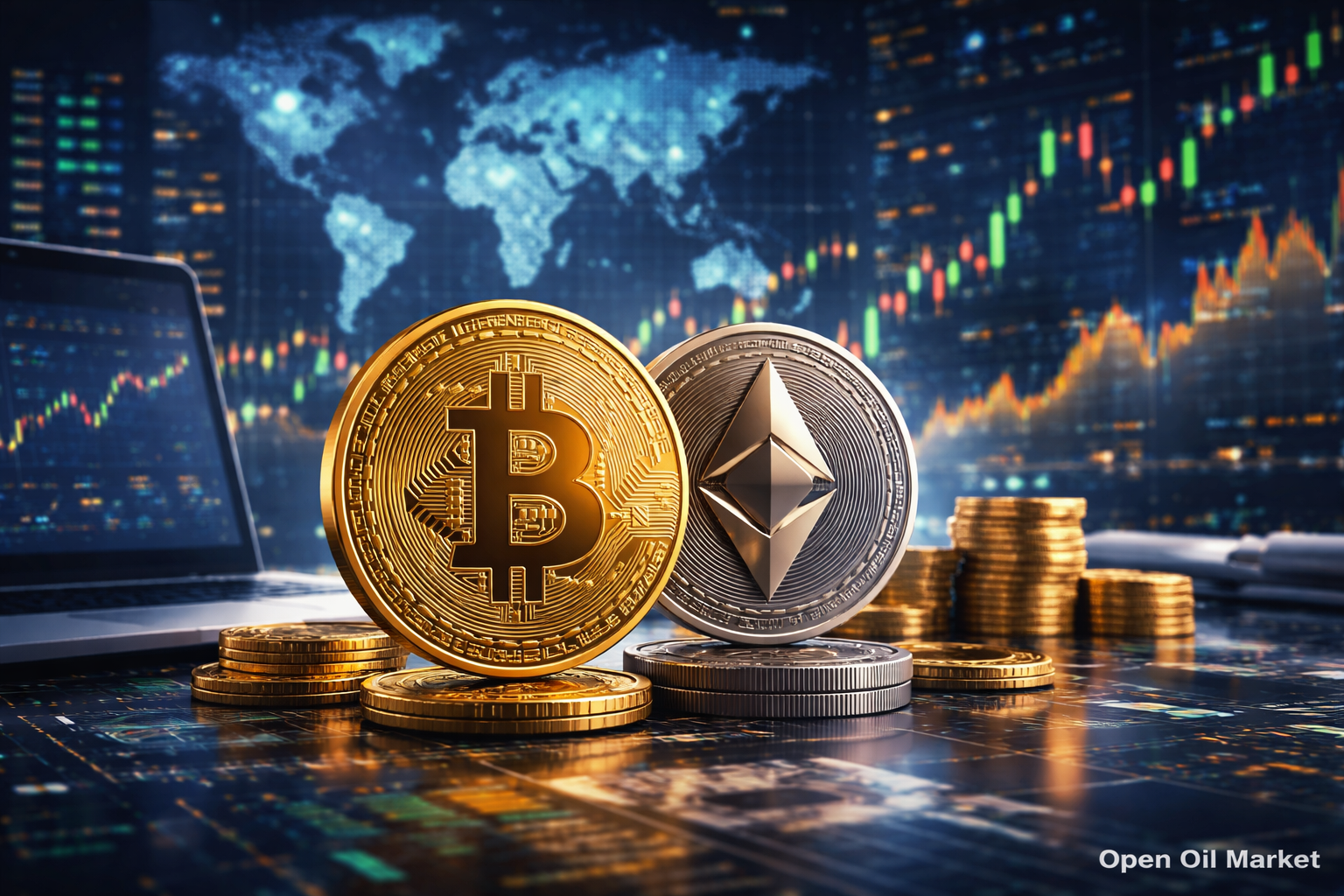
The Global Venture Market Is Recovering: Record Funds, Mega Rounds for AI Companies, and the Return of IPOs. A Review of Key Deals and Trends as of October 13, 2025 for Venture Investors.
As we enter the fourth quarter of 2025, the global venture capital market is exhibiting a rapid recovery following several years of decline. Investment volumes have once again approached record levels, driven by excitement surrounding artificial intelligence and the return of major players to the venture market. Deals with unprecedented financing amounts have become the new norm, and the IPO window appears to have reopened after a prolonged pause. These trends indicate the emergence of a new global venture boom.
Leading venture funds are forming record-sized investment funds, while governments around the world are increasing support for innovation, and corporations are renewing startup programs, eager not to miss the next technological wave. Preliminary estimates suggest that 2025 could become the most successful year for venture investments since the previous peaks of 2021. At the same time, investors are still selective in their approach to deals, directing the largest resources towards AI projects and other segments with high growth potential.
The Global Venture Market Boom
The global startup market is experiencing a new upswing, reflected in increasing funding volumes worldwide. Key indicators confirm the scale of this growth:
- The global volume of venture investments in Q3 2025 reached approximately $97 billion (an increase of about 38% compared to Q3 2024).
- Each of the last four quarters has exceeded the $90 billion mark in total investments, levels not seen since the venture boom of 2021-2022.
- Since the beginning of 2025, startups around the world have raised over $360 billion in total, significantly outpacing last year's pace and indicating a record outcome for the year.
The primary driver of growth has been the so-called mega rounds—late-stage financing rounds of $500 million and above, which account for a lion's share of the capital inflow. In just the third quarter, about one-third of all investments were concentrated in 18 of the largest deals, each attracting at least half a billion dollars. Capital is flowing into a limited number of the most promising companies, raising overall market performance.
Record Investments in AI
The artificial intelligence sector has become the main "magnet" for venture capital in 2025. For the first time in history, over half of all venture capital investments are being directed towards AI, reflecting an unprecedented surge of interest in generative AI technologies following the arrival of ChatGPT. Key facts illustrate this boom:
- Since the beginning of the year, more than $192 billion has been invested globally in AI startups—over 50% of the total volume of venture deals.
- In the U.S., AI projects accounted for about 62% of all venture investments in the last quarter; globally, this figure is approximately 53%.
In fact, nearly every second dollar of venture capital is currently going into the development of AI products. This has led to astronomical evaluations for industry leaders: OpenAI's valuation reportedly exceeded $500 billion, while California-based startup Anthropic, following a recent funding round of $13 billion, is valued at around $183 billion. Just this monumental round for Anthropic accounted for nearly one-third of all funds invested in AI in the third quarter. In contrast, venture funding outside of AI has grown much more modestly: the number of startups receiving support has diminished to a multi-year low, and many investors have focused their efforts almost exclusively on AI initiatives.
Mega Rounds and New "Unicorns"
The concentration of capital in large deals has transformed the landscape of startup investments. Late-stage mega rounds (of $500 million or more each) have become the hallmark of 2025. With several dozen such deals occurring each quarter, individual startups are attracting financing comparable to the budgets of public corporations. The record $40 billion round for OpenAI earlier this year and the subsequent $13 billion raise by Anthropic elevated them to the status of some of the most valuable private companies in the world.
While previously a startup's dream was to achieve a valuation of $1 billion (a "unicorn"), the market is now witnessing the proliferation of so-called "super unicorns" with valuations in the tens and even hundreds of billions. In 2025, there has once again been a rise in the number of new unicorns following a two-year pause—investors are willing to assign billion-dollar valuations to promising players, especially in hot sectors like AI. Notably, significant rounds of hundreds of millions have also occurred in robotics, chip manufacturing, cloud infrastructure, and quantum technologies. The risk appetite for late-stage investments has returned, allowing market leaders to scale up rapidly through venture inflows.
The Return of Mega Funds
Simultaneously with the increase in deals, there has been a resurgence in capital raising for venture funds themselves. The world's largest investment firms are announcing record-sized funds to meet the demand for investments in new technologies. For instance, American firm Andreessen Horowitz (a16z) is forming a mega fund of around $20 billion in 2025, focused on AI projects—this is the largest fund in the firm's history and one of the largest in the industry following SoftBank's renowned $100 billion Vision Fund.
Overall, the industry is once again flush with "dry powder": major players have accumulated tens of billions of dollars under management in recent years. In 2022, about 30 leading venture firms accounted for up to 75% of all raised funds—there is a clear trend towards fund consolidation. Sovereign wealth funds and institutional investors are eagerly investing in these mega structures, seeking access to the explosive growth of AI and other promising sectors. The amassed record volumes of idle capital signal increased competition for the best deals and a willingness within the venture market to finance projects of ever-greater scale.
Sector Diversification
Despite the dominance of AI, venture investments are being distributed across a wide range of industries, facilitating broader technological advancement. Following the third quarter of 2025, leading sectors by capital raised were as follows:
- Artificial Intelligence (AI): approximately $45 billion in investments for the quarter (about 46% of the total volume).
- Hardware Technology and Infrastructure: $16.2 billion (robotics, semiconductors, quantum computing, etc.).
- Medicine and Biotechnology: $15.8 billion (investments in pharmaceuticals, medical technology, healthcare services).
- Financial Technology (Fintech): approximately $12 billion (fintech startups and new payment services).
Thus, alongside AI, significant resources are being directed into hardware, biomedicine, fintech, and other verticals. The sector of defense and "dual-use" technologies has also seen growth: in Europe, investments in military technology startups have reached $9.1 billion by early October and may exceed $13 billion by year's end (compared to $6.5 billion the previous year). The share of defense projects in the structure of venture financing in the EU has risen to 6.2%, making this area the fastest-growing on the continent. Among the largest rounds of the year in European defense were, for instance, the German startup Helsing (€600 million for developing AI systems for the military) and the Portuguese drone developer Tekever (€70 million).
Moreover, investments in climate and "green" projects, new energy solutions, cybersecurity, and even niche crypto startups are also on the rise. While the global focus of investors has shifted towards AI, the venture boom of 2025 has a broad industrial base and encompasses nearly the entire spectrum of technological innovations.
Regional Highlights
The venture upswing manifests differently across key global regions:
- USA: The American market remains the main hub for venture capital—accounting for about two-thirds of global investments (approximately $60 billion in Q3). Most of the mega deals occur here, and it is home to the leaders of the AI race, attracting record funding rounds.
- Europe: Europe is experiencing a resurgence of venture activity and a reshaping of the landscape. Germany has outpaced the UK in venture investment volumes for the first time in a decade, reflecting the strengthening of continental startup ecosystems. The EU is focusing on strategic technologies (defense, quantum, green energy) with the backing of government and corporate funds. Despite discrepancies in dynamics between countries, the European market has generally aligned with global growth.
- Middle East (MENA): Gulf and Middle Eastern countries are showing record growth rates in venture investments. In Q3 2025, approximately $4.5 billion was invested in the region (a 523% quarter-on-quarter increase), with around $3.5 billion attributed to the month of September alone due to several mega deals in Saudi Arabia and the UAE. The activity of Middle Eastern funds (including sovereign funds) is positioning the region among the key global venture hubs.
- Asia: Trends in Asia are heterogeneous. The Chinese venture market remains sluggish—with deal volume falling by almost 45% in the first half of the year (to ~$10 billion)—continuing trends of regulatory restrictions. In contrast, India and Southeast Asian countries are attracting increasing capital: although the pace there is more modest, global funds are actively looking at Indian fintech and deep tech, given the relative stability of these markets.
- CIS: The startup ecosystems in Russia and other CIS countries are striving to keep pace with global trends, despite external constraints. In early October, Moscow hosted the major international summit Moscow Startup Summit, where a significant number of investment deals involving foreign funds were announced in the Russian market. Through state development institutions and corporate accelerators, the region aims to integrate into the new venture cycle, although the volume of investments in CIS countries remains incomparable to global leaders.
The Return of IPOs
Another sign of market revival is the resumption of technology companies going public. After nearly two years of hiatus, several large "unicorn" startups successfully conducted IPOs in 2025, reigniting hope for liquidity among investors. Notable listings in the third quarter included Chinese electric vehicle manufacturer Chery Automobile, American SaaS design platform Figma, Swedish fintech giant Klarna, and cybersecurity firm Netskope (USA), among others. The success of these IPOs affirmed that the long-awaited "window" for exits has reopened.
Over the past two quarters, IPO market activity has significantly increased on a year-over-year basis, and several highly valued startups are preparing for listing in the near future. Although the market valuations of debutantes are often lower than their peak private valuations, the mere fact of the IPO channel’s restoration enhances confidence among venture investors. The presence of an operational exit mechanism through public offerings stimulates the influx of capital into the venture cycle, as funds gain the ability to lock in profits and redeploy capital into new projects.
Mergers and Acquisitions
Concurrently with IPOs, the startup market is witnessing a wave of consolidation. Large corporations and strategic investors have ramped up M&A activity, acquiring promising teams and technologies. One of the largest deals of the year was Alphabet (Google)'s agreement to purchase cybersecurity cloud startup Wiz for $32 billion—this move will strengthen Google Cloud's position. OpenAI itself has also acted as a buyer, acquiring a hardware project based on technology from a former Apple designer for $6.5 billion, aimed at developing AI-based devices. Billion-dollar acquisitions continue, such as Cisco's announcement to acquire Splunk (a software company for data analysis and security) for around $28 billion, bolstering its presence in cybersecurity.
Rapidly growing startups are also increasingly adopting merger strategies: in the first half of 2025, over 400 instances were recorded in which a startup acquired another startup, approximately 60% more than the previous year. This internal consolidation aids stronger players in enhancing competencies and client bases, while founders of less successful projects find a "soft" exit. The wave of mergers and acquisitions is altering the industry landscape, opening new exit routes beyond IPOs and allowing the market to shed excess players. Combined with the revival of IPOs, this provides venture investors with confidence that even amid record valuations, portfolio companies now have more opportunities for capital return.




